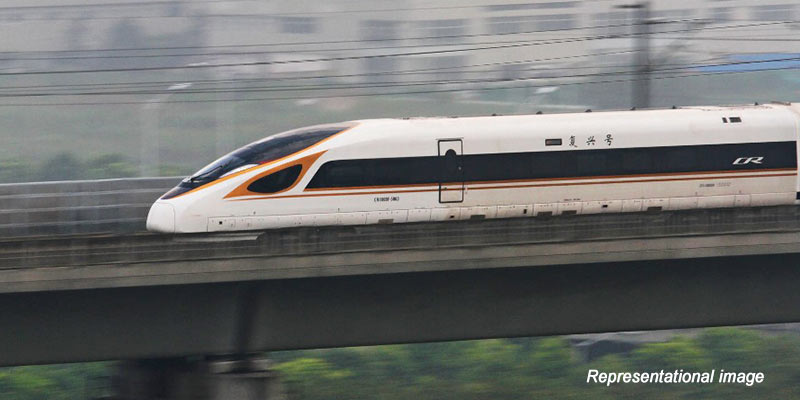- World
- Jun 26
China launches first fully-electrified bullet train in Tibet
• China operationalised its first fully electrified bullet train in the Himalayan region of Tibet, connecting the provincial capital Lhasa and Nyingchi, a strategically located Tibetan border town close to Arunachal Pradesh.
• China claims Arunachal Pradesh as part of South Tibet, which is firmly rejected by India. The India-China border dispute covers the 3,488-km-long Line of Actual Control (LAC).
• In November, Chinese President Xi Jinping had instructed officials to expedite construction of the new railway project, connecting Sichuan Province and Nyingchi in Tibet, saying the new rail line would play a key role in safeguarding the border stability.
• Nyingchi is the prefecture-level city of Medog which is adjacent to the Arunachal Pradesh border.
Key points:
• The first electrified railway in Tibet Autonomous Region opened on June 25, linking Lhasa with Nyingchi as Fuxing bullet trains enter official operation on the plateau region, a news agency reported.
• The 435.5-km Lhasa-Nyingchi section of the Sichuan-Tibet Railway has been inaugurated ahead of the centenary celebrations of the ruling Communist Party of China (CPC) on July 1.
• It has a designed speed of 160 km per hour and operates on a single-line electrified railway. It stops at nine stations, including Lhasa, Shannan and Nyingchi and can handle passenger and freight transportation, the report said.
• Compared to roads, the Lhasa-Nyingchi railway reduces the travel time from Lhasa to Nyingchi from 5 hours to approximately 3.5 hours, and cuts the travel time from Shannan to Nyingchi from 6 hours to approximately 2 hours, the report said.
• The rail line passes through 47 tunnels and 121 bridges and crosses the Brahmaputra river locally called Yarlung Zangbo. Tunnels and bridges account for approximately 75 per cent of the total length of the railway track.
• Also, it has an annual freight transport capacity of 10 million tonnes which provides strong support for the flow of goods, will promote economic development and improve people’s lives, the report said.
• The Sichuan-Tibet Railway will be the second railway into Tibet after the Qinghai-Tibet Railway. It will go through the southeast of the Qinghai-Tibet Plateau, one of the world’s most geologically active areas.
• The Sichuan-Tibet Railway starts from Chengdu, capital of Sichuan Province, and travels through Ya’an and enters Tibet via Qamdo, shortening the journey from Chengdu to Lhasa from 48 hours to 13 hours.
• The Fuxing train now reaches all 31 mainland provinces, autonomous regions and municipalities, a newspaper reported, noting that the rail line will better connect Tibet to other provinces and regions and will boost the local economy.
• Tourism, culture, religion and other natural and cultural resources along the Lhasa-Nyingchi Railway are rich, and they contain huge potential for economic development.
Manorama Yearbook app is now available on Google Play Store and iOS App Store

